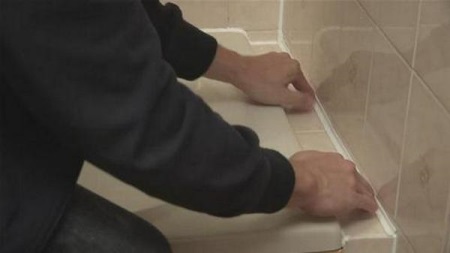Self-adhesive tape-boarding for bath
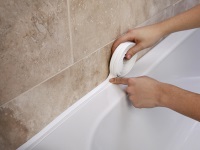
Every year in the field of repair appear dozens of products that can make our lives easier: modern building materials, handy tools, new models of equipment, etc. But even with the development of technology, there are problems with which today, as in the last century, faced by everyone who has made repairs in the apartment.
One of these "eternal" problems is the gap that forms between the bathtub and one or more walls. Today there are several ways to solve this problem. The easiest one is to use a self-adhesive border, also called border tape. It is glued to the joint between the bathtub and the wall, and serves as a reliable protection against water. In addition, the border tape allows you to disguise the ugly joint between the edge of the bathtub and tile.
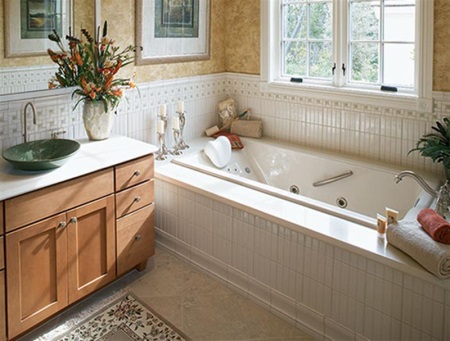
Advantages
- Of all the possible options for sealing the seam, self-adhesive - the curb is the most budget-friendly. Buying tape will cost you a few hundred rubles. A standard skein is enough for 7-8 uses.
- It is very easy to seal a gap with the help of border tape. One person can easily do it in less than an hour.
- The tape is made of waterproof material, so it is a reliable protection against moisture.
- The adhesive layer applied at the production stage allows the curb to be firmly attached to the edge of the bathtub and tile.
- The tape is almost impossible to damage, because it is soft and elastic.
- Self-adhesive edging is very plastic, so it can be used to work on uneven surfaces (this happens, for example, if the font is irregularly shaped).

Cons
- Self-adhesive curb for the bath is a short-lived product. Depending on how actively the family uses the bathtub, a self-adhesive curb will last you from a year to 3 years.
- Since the curb tape is fast enough to fall into disrepair, it should be periodically replaced. And this will have to spend some time, because you need to remove the old curb and prepare the surface for gluing the new one.
- To prevent water ingress under the bathtub, builders often treat the seam with silicone sealant for plumbing. Keep in mind that curb tape loses its properties if it comes into contact with acidic silicones, which are often present in bath sealants.

Composition
The main task of the bathtub curb is to protect unprotected surfaces from water, as high humidity promotes the appearance of mold, fungus and insects. Therefore, only waterproof and water-repellent materials are used in the production of curb tape.
The absolute majority of self-adhesive edging is made of synthetic polymers, most often polyethylene. In addition, the edging tape includes a special adhesive that is resistant to moisture and temperature changes.
Many manufacturers of curbs for the bathtub process the product with a special composition that includes phytoncide components. They repel insects, which are often enough to be found in the bathroom.
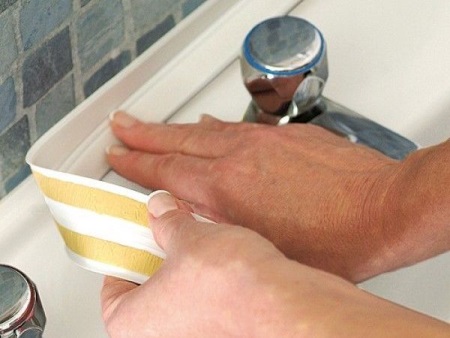
The range and peculiarities of choice
For the most part, the different types of curb tape that are sold in construction and hardware stores are virtually indistinguishable from each other. The difference in price is due to the presence or absence of phytoncide additives, which we discussed above, and the manufacturing firms.
However, there are two key points to pay attention to when buying curb tape:
- The size of the tape. The length of the curb tape is usually standard - it is sold in rolls of 30 meters. But the width can be different: on sale there are variants of 3, 4 and 6 cm. Narrower or wider samples are less common. The width of the tape should be chosen based on the size of the gap: so that there was a reserve on both sides, but it was not too big - otherwise it will look untidy.
- The color of the tape. Self-adhesive edging for the bath does not only come in white. You can find curb tape in stores with a wide range of colors to match your plumbing - beige, cream, blue and other light shades.
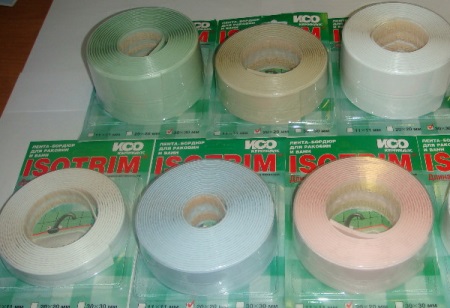
Installation
Installing curb tape is a very simple task, but, in order for the result to be durable and aesthetically pleasing, some prep work will be needed:
- If necessary, remove the old curb or its remnants;
- Clean the joint between the bathtub and ceramic tile of dirt - it can be residues of old glue or sealant, ingrained dirt, soap, mold, etc;
- Treat the surface with a degreasing agent and dry it well;
- Protect the bath enamel and ceramic tile from adhesive and sealant by gluing masking tape on both sides of the gap.

Preparation for the work is complete, and now you can proceed directly to the installation of the self-adhesive curb:
- Pour the sealant compound into the gap. Specialists recommend using a silicone-based sealant tucked into an installation gun.
- Smooth a layer of sealant with a rubber trowel or just a finger dipped in soapy water.
- Measure the length of the tub and cut the appropriate piece of curb tape, leaving a margin of a couple of centimeters. This is necessary in order to neatly join the tape at the corners.
- To make the tape even more elastic, warm it up for a few minutes with a hair dryer along its entire length.
- Moving from the corner, glue the edging, peeling off the protective strip a little at a time. Do not stretch the tape, but press it firmly against the surface.
- At the corners of the tub, parts of the tape are glued overlapping and cut at a 45-degree angle.
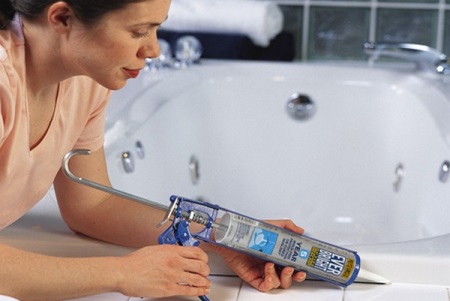
Most of the work is done, now you have to wait for the adhesive to dry and check the quality of the work done:
- After gluing the curb, do not use the bathroom for a day. This is to allow the glue to set better.
- After the allotted time, try to move the curb tape. If it does not budge, then the job is done well. If in some places the edge of the tape lags from the surface, gently glue it with any water-resistant adhesive used for repairs.
- The final step is to remove the masking tape. Now you can take your bath!
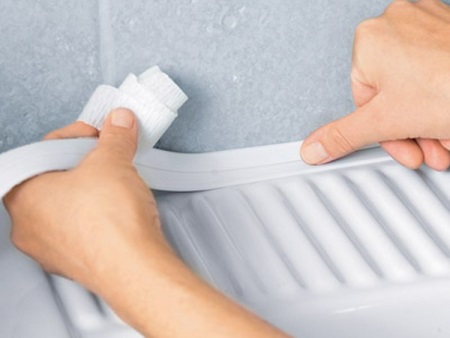
Care
Self-adhesive bathtub curb is completely unpretentious in care. It should be cleaned as needed with the same detergents that you use to clean your plumbing. The only thing you should avoid is exposure to abrasives and contact with hard, metal brushes. Curb tape is a strong but soft material, so "aggressive" cleaning can damage it.
